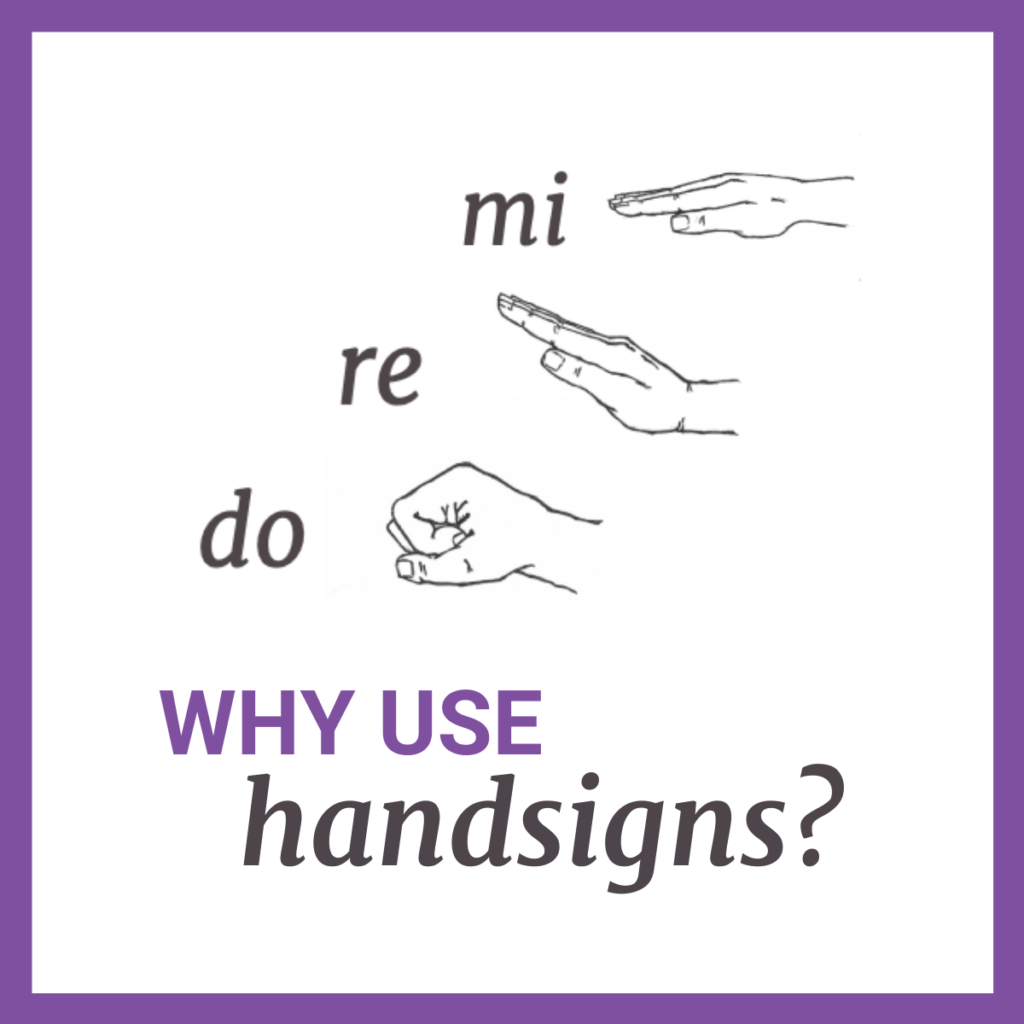Why Use Handsigns?
Everything you need to strengthen your musicianship skills

Each Solfa note (do, re, mi etc.) has a certain shape you make with your hand whenever you sing it – a handsign.
As you sing the notes, you also move your hand up and down in a way that matches how the pitches are moving.
It’s this approach that means you use your whole body to understand the way notes relate to each other.
Handsigns are used to provide a visual or kinaesthetic aid to singing and allows you to actually see the height or depth of the pitch.
The handsigns are made in front of the body, with do falling at about waist level and la at eye level. Their distance in space corresponds with the size of the interval they represent.
Benefits
- handsigns can help with pitch recognition, in-tune singing and interval recognition (e.g. fa and ti always point to where the semitones lie)
- handsigns are a way to practice pitches (or sight-read them) without making any sound as they are physically associated with pitch, this fosters the skill of Inner-Hearing
- integrating handsigns also varies the way you can practice aural patterns
- you can use handsigns to perform an aural pattern simultaneously – that is, sing one thing and sign another
- handsigns offer physical or kinaestethic learners another way to engage and practice
Example from page 4 of the Musicianship & Aural Training for the Secondary School Level 3 books:

Access a full handsign chart for download here.
Important note:
Make sure though that your handsigns show the pitch in the air accurately. For example, do should be around the height of your belly button, re is a step higher and so on up to high do” which is probably around the height of your forehead.
Read on for more….
As mentioned on the Solfa page, John Curwen developed handsigns in the 1840’s to accompany Sarah Ann Glover’s Solfa syllables. These were then slightly adjusted again and integrated into the Kodály teaching method by Hungarian composer, ethnomusicologist and educator Zoltán Kodály.
Handsigns, just like Conducting, are a gateway skill – using the physical action will support other elements of musicianship and aural awareness, particularly when you’re trying to introduce or practice concepts.

